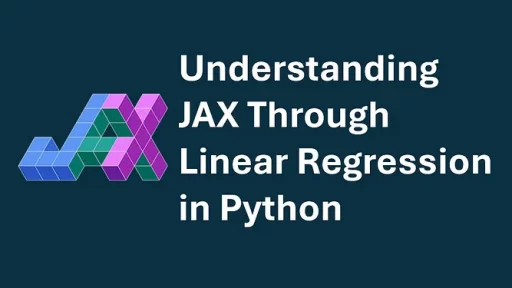Machine Learning Applications Using Python: Case Studies from Healthcare, Retail, and Finance by Puneet Mathur explores real-world implementations of machine learning across critical industries.
The book provides a hands-on approach, showcasing Python’s extensive libraries — such as Scikit-learn, Pandas, TensorFlow, and Matplotlib — facilitate data analysis, pattern recognition, and predictive modeling. Through case studies, Mathur highlights how organizations deployed machine learning (ML) solutions to tackle industry-specific challenges.
ML is no longer confined to tech giants. Financial institutions rely on anomaly detection to prevent fraudulent transactions. Healthcare providers use predictive models to anticipate patient readmissions and optimize care strategies. Educational platforms analyze student data to create personalized learning experiences. These applications demonstrate how Python empowers industries to harness data for better decision-making.
The following case studies illustrate how Python and ML are making an impact. Each example details a problem, the data-driven solution, and the tangible results achieved.
Finance: Fraud Detection at JPMorgan Chase
Problem: JPMorgan Chase, one of the world’s largest financial institutions, faced the challenge of detecting fraudulent transactions among millions of daily operations. Traditional rule-based systems were insufficient due to the evolving nature of fraudulent activities.
Solution: The bank developed a machine learning model using Python to enhance its fraud detection capabilities. They utilized the Isolation Forest algorithm from the Scikit-learn library to identify anomalies in transaction data. This unsupervised learning method excels at detecting outliers by isolating observations that differ significantly from the norm.
Implementation Details: The data science team collected a vast dataset of historical transactions, including both legitimate and fraudulent examples. They preprocessed the data using Pandas for cleaning and organization. The Isolation Forest model was then trained to recognize patterns of normal behavior, enabling it to flag deviations indicative of potential fraud.
Outcome: The implementation of this Python-based solution led to a significant reduction in undetected fraudulent transactions. The model’s ability to adapt to new fraud patterns in real-time allowed JPMorgan Chase to stay ahead of fraudsters, ensuring enhanced security for their customers.
Reference: For a detailed exploration of machine learning applications in finance, including fraud detection, consider the book “Machine Learning Applications Using Python: Case Studies from Healthcare, Retail, and Finance” by Puneet Mathur.
Healthcare: Predicting Hospital Readmissions with Python
Problem: A major hospital network aimed to reduce the rate of patient readmissions within 30 days of discharge, a key metric for patient care quality and cost management. Identifying patients at high risk of readmission was essential for targeted interventions.
Solution: The hospital’s data science team developed a predictive analytics solution using Python. They employed logistic regression, a statistical method suitable for binary classification problems, to estimate the probability of patient readmission.
Implementation Details: Data from electronic health records (EHRs) were extracted, including patient demographics, medical history, treatment plans, and previous admissions. The team used Pandas for data manipulation and cleaning, ensuring the dataset was suitable for analysis. Features were selected based on their relevance to readmission risk, and the logistic regression model was built using Scikit-learn.
Outcome: The model achieved a high level of accuracy in predicting readmissions, allowing healthcare providers to identify at-risk patients proactively. This enabled the implementation of targeted care plans, such as follow-up appointments and patient education, ultimately reducing readmission rates and improving patient outcomes.
Reference: The book “Machine Learning Applications Using Python: Case Studies from Healthcare, Retail, and Finance” by Puneet Mathur provides insights into similar applications of Python in healthcare.
Education: Enhancing Student Engagement with Data Analysis
Problem: An online education platform sought to improve student engagement and course completion rates. They needed to identify factors contributing to student drop-offs and develop strategies to enhance the learning experience.
Solution: The platform’s analytics team turned to Python for data analysis and visualization. They analyzed user interaction data to uncover patterns and correlations that could inform interventions.
Implementation Details: Data on student interactions, such as time spent on course materials, quiz scores, and forum participation, were collected. Using Pandas, the team cleaned and organized the data. They then applied exploratory data analysis techniques with Matplotlib and Seaborn to visualize trends. Machine learning models, including decision trees and clustering algorithms from Scikit-learn, were used to segment students based on engagement levels.
Outcome: The analysis revealed key factors influencing student engagement, such as the importance of timely feedback and the impact of interactive content. Based on these insights, the platform implemented personalized learning paths and proactive support measures, leading to increased course completion rates and improved learner satisfaction.
Reference: For a comprehensive guide on applying machine learning in various domains, including education, refer to “Machine Learning Applications Using Python: Case Studies from Healthcare, Retail, and Finance” by Puneet Mathur.
These case studies illustrate Python’s versatility and effectiveness in addressing complex challenges across different industries. Its extensive libraries and active community support make it an invaluable tool for developing innovative solutions in finance, healthcare, education, and beyond.
Thank you for reading this article. I hope you found it helpful and informative. If you have any questions, or if you would like to suggest new Python code examples or topics for future tutorials, please feel free to reach out. Your feedback and suggestions are always welcome!
Happy coding!
Py-Core.com Python Programming
You can also find this article at Medium.com


